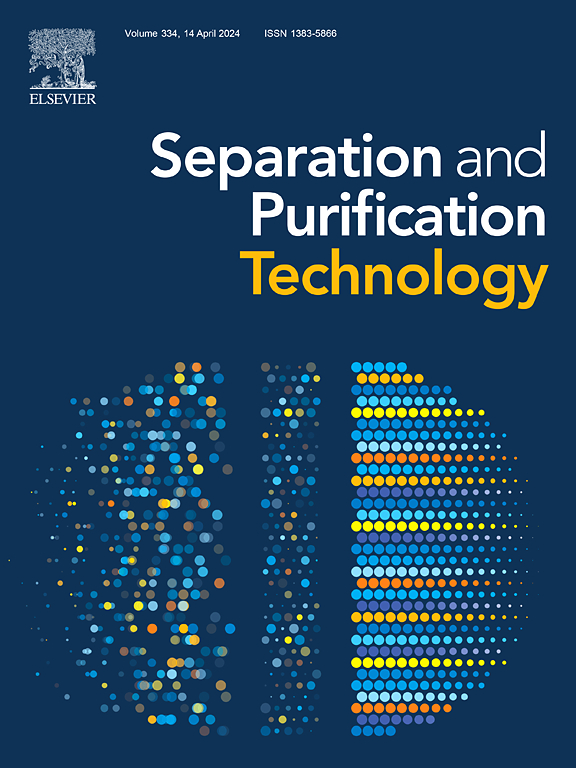Development of Novel DBA-DMEA solvent for CO2 absorption and regeneration in the packed column
IF 8.1
1区 工程技术
Q1 ENGINEERING, CHEMICAL
引用次数: 0
Abstract
The mass transfer process of CO2 absorption into blended DBA-DMEA (di-n-butylamine; N,N-dimethyl ethanolamine) solution was studied over different operating conditions in a lab-scale absorption column (H = 1.3 m, D = 27 mm) randomly packed with Dixon rings. The effects of 5 vital operating parameters on volumetric overall mass transfer coefficient (KGav) were comprehensively investigated. A new predicted model was proposed on basis of the experimental value of KGav, which gave a progressive and accurately predication performance. In addition, CO2 stripping from rich-loaded aqueous DBA-DMEA solution was also investigated in the same column with corresponding operating parameters, the reboiler heat duty (Qreb) was selected as the benchmark. The solvent regeneration process was also validated in a sealed reactor, turning out that DBA-DMEA system showed much lower heat duty in all conditions. Both the mass transfer and heat duty results indicate the DBA-DMEA solution becoming efficient and promising amine-based absorbent in post-combustion CO2 capture.


新型DBA-DMEA填料塔中CO2吸收再生溶剂的研制
混合DBA-DMEA(二正丁胺)吸收CO2的传质过程采用随机填充Dixon环的实验室规模吸收柱(H = 1.3 m, D = 27 mm)对N,N-二甲基乙醇胺(N,N-二甲基乙醇胺)溶液在不同操作条件下进行研究。全面研究了5个重要操作参数对体积总传质系数(KGav)的影响。在KGav实验值的基础上,提出了一种新的预测模型,该模型具有递进和准确的预测性能。此外,还以重沸器热负荷(Qreb)为基准,在同一塔上以相应的操作参数考察了富负载DBA-DMEA水溶液中CO2的提馏。溶剂再生过程也在密封反应器中进行了验证,结果表明DBA-DMEA系统在所有条件下都表现出较低的热负荷。传质和热负荷结果均表明,DBA-DMEA溶液是高效且有前途的胺基吸收剂。
本文章由计算机程序翻译,如有差异,请以英文原文为准。
求助全文
约1分钟内获得全文
求助全文
来源期刊

Separation and Purification Technology
工程技术-工程:化工
CiteScore
14.00
自引率
12.80%
发文量
2347
审稿时长
43 days
期刊介绍:
Separation and Purification Technology is a premier journal committed to sharing innovative methods for separation and purification in chemical and environmental engineering, encompassing both homogeneous solutions and heterogeneous mixtures. Our scope includes the separation and/or purification of liquids, vapors, and gases, as well as carbon capture and separation techniques. However, it's important to note that methods solely intended for analytical purposes are not within the scope of the journal. Additionally, disciplines such as soil science, polymer science, and metallurgy fall outside the purview of Separation and Purification Technology. Join us in advancing the field of separation and purification methods for sustainable solutions in chemical and environmental engineering.
 求助内容:
求助内容: 应助结果提醒方式:
应助结果提醒方式:


